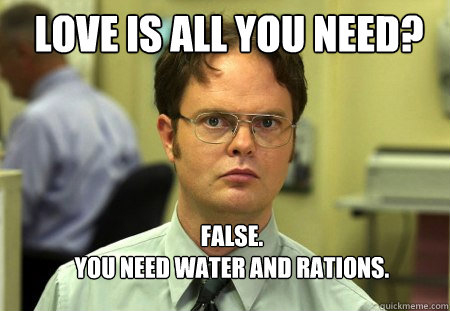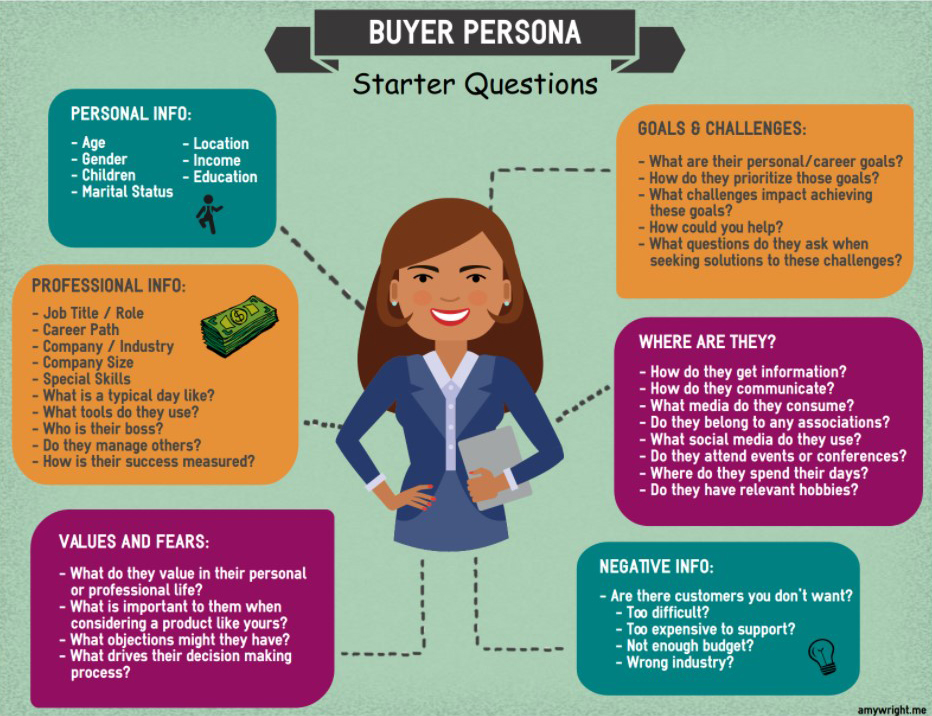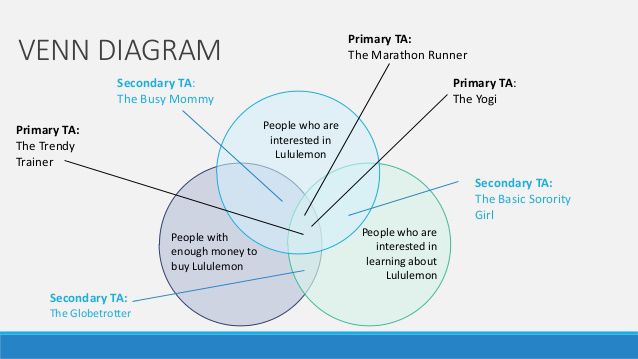WTH? Clients are madder than a Hatter in Alice’s Wonderland…
WTH? Why are clients madder than a Hatter in Alice’s Wonderland…
First of all, let’s do a little truth talking here. The most important thing to know about your clients is that they’re busy and highly distractible (and maybe just a little Mad Hatter)...
Of course, you love your products, services and solutions because they’re amazing (duh)! However, clients might not know the difference between what you’re offering and their doorknob.
But, it’s easy to fall into the thinking trap that your clients, after discovering your company, will automatically fall in love with your products, services and solutions too. In this mindset, your clients might resemble this:

Obviously, in the scenario above, your clients are the ecstatic children playing with bubbles (your products/services/solutions).
HOWEVER, the truth (that clients are busy and highly distractible people) is that they typically look like this:

You might be thinking, “Hey!!! Where’d all my bubbles go?!!! (They cost a fortune! They were Italian, for godssakes…get off your phones and help me find them!)
Let’s dispel some common myths that will hamper your ability to clearly capture a picture of your ideal buyers:
1. “Everyone is your customer.”
This reminds me of the time I accidently inhaled a mosquito and hacked up a lung. THAT’S HOW WRONG THIS FEELS AND HOW WRONG IT IS.
To further illustrate this, I’m going to turn this over to Seth Godin. He’s the Yoda of the marketing world. He’s slain many a laser wielding marketing foe through the lens of his wisdom alone. He’s absolutely right when he says this:
“Everyone is not your customer.”
Gotta love his simplicity and directness (I bow to him).
Really, now you can go home and sleep better at night knowing that you just saved yourself from a colossal time suck. Please don’t try to chase everyone down like you’re the ice cream man.
Just like not everyone sells the same universally loved product, like ice cream (except the ice cream man and grocery stores), everyone does not have the same problems (that you’re uniquely skilled at solving). It’s okay to not serve the masses.
What it does mean is that you get to serve the right people by doing exactly what you’re good at while being exactly who you are. Win-win, right?
2. “All you need is love.”
(Nope) Let me crack open an adult beverage and hand this over to the almighty Dwight first:

Though most of us can agree that the Beatles were just pure musical geniuses on steroids, when it comes to selling products, they too hired marketing experts. Love, in the romantic-pants-on-fire (more pants references, again??) wears off over time.
Before you lose your mind, please note that this isn’t a sardonic statement meant to kill off the sanctity and importance of love, etc. (so don’t email bomb my inbox, please).
My point is this: though your ideal clients may fall in love with your products, services and solutions, how do you plan on sustaining these relationships over time? What does love mature into as it grows?
The answer: authenticity, integrity, respect, inside jokes, watching the sunsets together, and maybe even DIY building a plunge pool together.
How do you make sure these key relationship characteristics are there from the beginning? (In addition to the love of your offerings…) By getting to know your buyer. To do that, you’ll need to create a Buyer Persona (BP).
Now, let’s establish a few things first.
What’s a Buyer Persona (BP)?
Great question. There are many ways to define what a BP is, though we love Social Media Today’s version:
“A buyer persona is a research-based profile that depicts a target customer. Buyer personas describe who your ideal customers are, what their days are like, the challenges they face and how they make decisions.”
If you’ve never made a persona before, it can be hard to wrap your head around them at first. Especially if you’re not a writer (of novels and screenplays), an avid online dater (on at least 3 different dating sites), or a marketer by trade (spent 4 years mapping out all the Jills and Joeys who want to buy canned tuna).
Creating a BP can even seem a bit weird or stalkerish. (Especially if you’re not a digital native who’s been surfing online social profiles like Magnum PI since birth.)
Try thinking about BPs as characters in a movie who are feverishly trying to solve or attain something (e.g. pain point resolution) or as online dating profiles with their lists of traits, preferences and pet peeves. (Do you and Susie (or Sam) both like sushi? What about dogs? Do you both hate liars? Good, because you should.)
The great thing about BPs is that there are many ways to learn (e.g. gather data) about your ideal buyers without them having to star in a play or try to date someone via the internet. The best sources of data include demographic, geographic, psychographic and behavioral info.
Now, that you know what they are, the question you might be wondering is why do they matter? How does creating buyer personas translate into dollar signs?
The first thing buyer personas do is save you money. BPs make it easier to understand the complex humanity of your clients while giving real data that helps you identify what they actually want and need.
So, goodbye to fire hose (and wasteful) marketing campaigns and unpopular products, services and solutions that nobody ever liked anyway.
You might be thinking that this all sounds like it takes way too much time, energy, money, etc. That really, all you need is to find the buyers that really get and love your product.
Creating and using buyer personas also enables you to create personalized experiences thereby enabling you to target your ads and content (website, blogs, emails, etc.) specifically for these BPs.
The clients, in turn, feel understood, seen, heard, and best yet, respected. And who doesn’t need more respect (and relaxation) these days?
You might be saying, “Got it. Got it. Got it. Just tell me how to create one already.”
I’d love to.
Here’s the top three steps to creating your own buyer persona.
1. Do Your Research (aka break out your inner Magnum PI)

To create a buyer persona, it all starts by asking some good, old-fashioned questions (like those in the graphic above) about your clients that will provide the structure and framework for your data collection process.
If that feels too overwhelming, start with these questions instead:
- Who is already buying from you? (Age? Location? Interests? Life stage?)
- Make a list of your favorite customers and why they’ve achieved “favorite” status in your eyes.
- Who is your competition selling to?
- Are they targeting groups you should be?
- What problem or pain point does your brand solve?
- How does your brand solve the problem differently than your competitors?
- What makes you unique?
After you’ve collected all this data in an easy to read and access format, you’re ready to take the next step.
2. Identify Common Ground (aka building them bones)
Now it’s time to analyze the client data you culled to see where their needs match up with what your company offers. Time to break out the Venn diagram (though feel free to use whichever format works best for you when organizing and making sense of data.)
Let’s walk through Lululemon’s buyer personas development (aka the people that want and need bendy pants) as one example.

You might be thinking, “Hey! I sell pants too.”
Great job! You’ve already found your first common characteristic. Let’s continue onward, my friend.
Imagine for a moment that you work for Lululemon. Not only do you get to wear stretchy pants every day and call it business casual, you also get unlimited access to every conceivable activity that requires pliable pants.
So, looking at the list of ideal buyers below, what pain points do they have around athletic clothing that Lululemon solves for them? To answer this, you’ll need to outline some basic data that you have the people that would probably buy your product. Since this is the time to build the bones of your BPs, focus on thinking in broader strokes.
- Yogis in their 20’s – 30’s
- No kids
- Has 1-3 pets
- Takes 3 yoga/exercise classes a week
Or
- Trendy Trainer in their 30’s – 40’s
- Has 2-3 kids
- Runs own business
- Involved in civic and community service work
Or
- Marathon Runners (aka Pandemic Remote Workers) in their 40’s-60’s
- Has 2-3 kids learning remotely
- Assists with 1-3 elderly relatives (and/or neighbors)
- Owns a house
Now that you’ve created a general overview of significant factors in your BPs lives, it’s time to make them relatable by fleshing them out with more specific details.
3. Making it Real (aka fleshing them out)
You’ve got the bones done, well done. Now is the time for more concrete details. What do all these Yogis, Trendy Trainers and Marathon Runners look, sound and behave like in real life?
How can you, using your collected data and your imagination, create a BP that is someone that you’d actually run into on the street?
Do your best to keep them as plausibly real as possible (as in they live in our shared reality and not the Netflix version, I know, I love that one too, but we’re not making movies here).
As you layer in more particular, concrete detail, you’ll start to come up with a BP that’s easy to relate to and connect with.
For example, here’s how those previous broad strokes of potential clients look when more distinct detail is added.
- Yogi, Mateo, single, 29 years old
- Has 1 dog, Sammy
- Takes 3 yoga classes a week at local yoga studio
- Works for a tech company on the west coast (and lives there)
- Commutes by foot or bike mostly
- Goes from working at home, to yoga class, to social outings.
- Lives in an apartment where the elevator breaks often
And
- Trendy Trainer, Aliyah, married, 37 years old
- Two sons, Elijah, 8 and Jonathan, 10
- Owns and runs her own private fitness training business
- Serves on the school board as well as the local economic development board
- Goes from working out with clients to office meetings to family time throughout the day
- Typically works 10-12 days
- Takes care of most of the shopping and meal prep at home
And
- Marathon Runner/Pandemic Remote Worker, Connor, widowed, 52 years old
- Two kids, one daughter, Mirabel, 13, one son, Max, 16
- Works remotely as a professor (open dress code, at least below the waist)
- Assists elderly parents (who live across town)
- Cooks most meals at home
- Many household chores
- Running is his sacred time, does it daily to stay sane
- Goes from running to cooking to working to family time throughout the day
As you can see, it’s a lot easier to connect AND interact with Aliyah, the “Trendy Trainer” rather than a random trainer in their 30s-40s.”
Remember these don’t have to be perfect since you’re just making your first “dirty draft.” You just need as accurate of a representation as possible given the data you have available.
You can always refine the details of the BP over time as you learn more about them. Also, you avoid going into the weeds on this one. You only need enough significant, concrete detail to focus.
Though it may be interesting to imagine that Connor needs some flexible yet slick pants so he doesn’t look like a chump taking out the trash, this probably won’t add more value (unless you plan on marketing to him on garbage cans).
If you’re super new to BPs or to a company/product/service, it’s easy to get stuck. It’s always easier to work off of something rather than nothing right? If this is true, try creating a negative BP (aka The Anti-Client”).
Stuck? Try a Negative Persona (aka “The Anti-Client”)
So, let’s say that you’ve done your research but are still struggling to create the “character” of your client. It’s time to try making a negative persona.
Make a list of all the people who are not your clients, people who don’t need or would never buy your products/services/solutions. Let’s again pretend you work for Lululemon.
Who are the people who don’t need and would never buy athletic wear aka pliable pants?
- Nuns who only wear habits. (So, I seriously looked this up because come on, who isn’t doing yoga these days? AND… damn internet, you’re awesome.)

Apparently, nuns also have snowball fights in habits! (I’ll let you Google this one all on your own.)
I’m realizing how little I know about nuns…
As you continue to create your negative personas remember to think about your clients purchasing power and available time (and attention capacities).
Do they have the discretionary income to spend on studio fitness or yoga classes and therefore, higher end athletic wear?
Do they have the time to even shop for pants let alone go to a class?
Do they only wear habits?
At the end of the day, creating and using buyer personas are a cornerstone of successful digital marketing.
Just like you wouldn’t go on a date with a nun (dude, she took a vow okay, have some respect), you’re not gonna pour thousands of dollars trying to attract and retain clients that don’t want or need any fancy bendy pants.
Congratulate yourself on making it this far, you’re on the right path and doing great.
Just remember, be you, get to know your clients, show them you understand them and make them feel valued…and lastly, solve their problems with pizazz.
Another win-win, right?
Now that you know the basics on creating your buyer personas and why they matter, stay tuned to learn more about how to use current client success stories to attract new clients to generate more sales.
Got Marketing Questions? We can help.
By clicking this button, you submit your information to Scott Growth Strategies, who may use it to communicate with you regarding this and other services.
